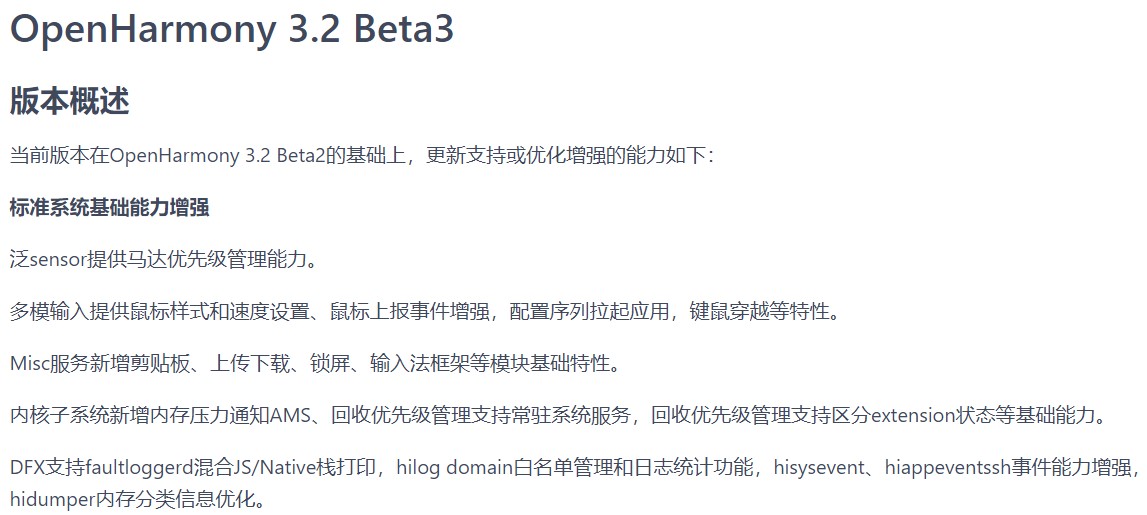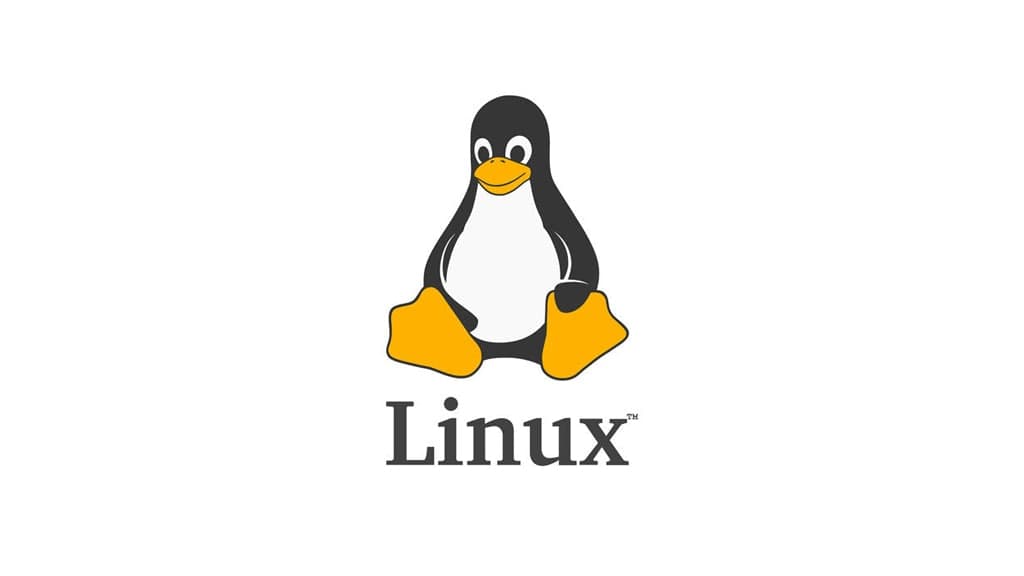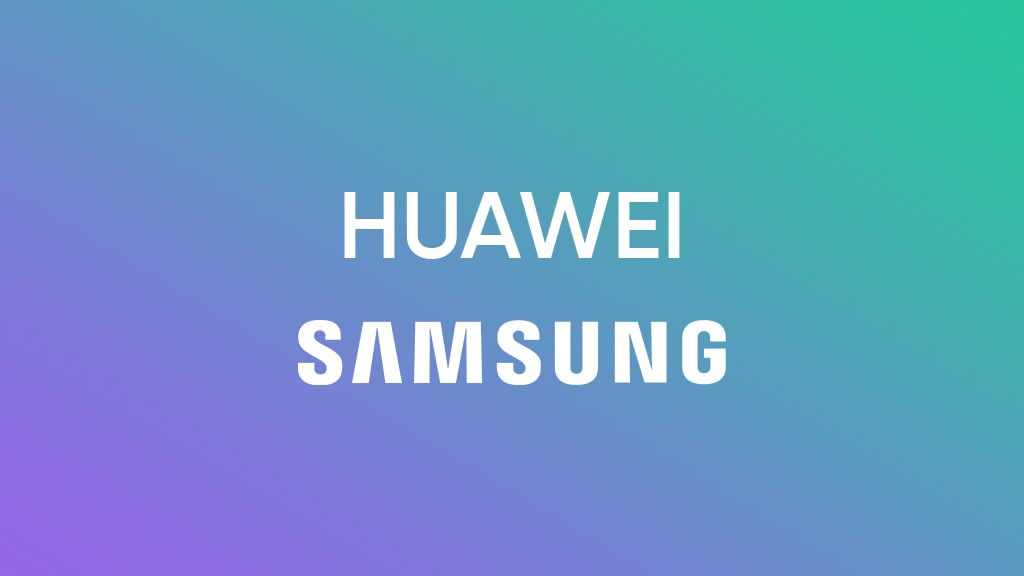Huawei P50 series gets new super fast charging turbo mode with December 2022 update
Huawei releases December 2022 HarmonyOS security patch details
Jinhong OS launched based on HarmonyOS
Breaking: Huawei P30 and Mate 20 begins HarmonyOS 3 beta race
Huawei Enjoy 50 Pro begins HarmonyOS 3 beta testing
Huawei Mate 50 series begins pre-order in Saudi Arabia
Huawei Nova 9 refurbished version goes on sale
Huawei Mate X3 will be light in design
Huawei Mate 50 Pro selfie camera tops DXOMARK ranking along with iPhone 14 Pro
It was very difficult to make Huawei Mate 50: CEO
Huawei P50 series gets new super fast charging turbo mode with December 2022 update
Huawei P40 is the first to grab December 2022 EMUI security update
Honor Magic 4 Pro is getting Magic UI 6.0.0.177 with new features and optimizations
Huawei P40 Lite grabs November 2022 update in Europe
5 year old Huawei mid-ranger gets new EMUI features
Download Huawei AppGallery App (12.7.1.200 beta)
Get the latest My Huawei app [12.1.10.300]
December 2022 Google Play System update brings new changes to digital driver’s license
Google Play Store rules troubling Android users in US
Download Huawei Celia Keyboard [11.0.5.309]
Huawei MatePad SE and Pro 12.6 gets new memory version to Malaysia
Huawei MatePad Pro 10.8 gets November 2022 patch
Huawei is the only PC maker to make growth in Q3 2022 in China
Huawei MateBook 14 1TB version will launch on December 9
Huawei MatePad 11 gets new 8GB + 256GB storage version
Funny video shows Huawei Watch Buds carrying capsules inside
Huawei Children’s Watch 5X officially unveiled
New Watch GT 3 Pro Collector’s Edition is the best designed smartwatch
Huawei Watch Buds smartwatch with in-built earphones launched
[Update] Huawei Watch Buds is ready, check these pics before it launches
Published
on
By
Yesterday, OpenHarmony 3.2 Beta 3 version was released for the developers. The version is based on Beta 2 and comes with the following three improvements.
- Enhancement of basic capabilities of standard systems
- Standard system application development framework enhancement
- Enhanced distributed capabilities of traditional systems
Check the OpenHarmony 3.2 Beta 3 complete details below. 
Enhancement of basic capabilities of standard systems:
Pan sensor provides motor priority management capability. Multi-mode input provides features such as mouse style and speed settings, enhancement of mouse reporting events, configuration sequences to launch applications, and keyboard and mouse traversal.
The Misc service adds basic module features such as clipboard, upload and download, screen lock, and input method framework.
The kernel subsystem adds memory pressure notification to AMS, recycling priority management to support resident system services, and recycling priority management to support basic capabilities such as distinguishing extension status.
DFX supports faultloggerd mixed JS/Native stack printing, hilog domain whitelist management and log statistics functions, enhanced hisysevent and hiappeventssh event capabilities, and optimized hidumper memory classification information.
The unit testing framework has added parameterized data-driven capabilities, the UI testing framework has added the interface of throwing and complex gestures such as two-finger pinch capabilities. Xdevice has added the ability to collect device DFX logs after task execution is completed.
Added support for ES2021 in strict mode, modular support, runtime debugging and tuning enhancements, bytecode hot reloading, cross-platform support, etc. when compiling and running.
The account service has added user identity authentication service. The authority service has added support for precise positioning or fuzzy positioning, and other capabilities have been enhanced and added privacy management service.
The media subsystem supports audio decoding, audio encoding, video decoding, video encoding native interface, supports playback audio and video synchronization and startup time optimization, supports video hardware encoding and decoding capabilities based on HDI codec interface, supports distributed audio, volume, equipment Status management, device monitoring and broadcasting functions, support for distributed camera preview, photography and video recording.
Standard system application development framework enhancements:
Added DLP for events and notifications, added support for sending notifications from subsystems.
Support webview copy and paste, support basic audio and video playback, support HTTPS two-way authentication, and other capabilities.
Meta-capacity has added permission verification and rectification, startup rules, quick repairs, and cards that can be divided and combined.
Enhanced ArkUI component capabilities, enhanced resource and media query capabilities, optimized memory and performance, DFX capabilities, and enhanced toolchain capabilities.
DeviceProfile adapts to the automatic synchronization strategy of distributed databases and completes the collection of information.
Package management has added support for thumbnails and preview extensions. Some features have added support for cropping configuration, fool-proofing mechanism, and preset application-specific capability management. The installation process supports the hap package without decompression and supports a quick repair mechanism.
System service management supports cross-device loading of system services, foundation process restart, and recovery mechanism, distributed component management supports multi-user cross-device calls, and migration framework supports single-instance Ability migration.
Enhanced distributed capabilities of standard systems
The distributed database supports cross-device and cross-application sharing, RDB supports remote query/database encryption features and supports applications avatars. KVDB supports backup recovery/conditional synchronization/device online priority and centralized synchronization of system data.
Huawei will continuously solve survival problems: Chairman
Huawei and other companies certified for 100W fast charging power
Most of Deng Li’s smartphones are from the Huawei ecosystem and his first Huawei phone was Ascend Mate 2 (4G). As a tech enthusiast, he keeps exploring new technologies and inspects them closely. Apart from the technology world, he takes care of his garden.
Huawei Mate 50 series begins pre-order in Saudi Arabia
Huawei EMUI December 2022 Devices: Monthly and Quarterly
Huawei Nova 9 refurbished version goes on sale
Published
on
By
Huawei has officially confirmed that the largest experience store in UAE will open on December 16 at City Center Deira. According to the information, It will be Huawei’s 7th experience store in UAE.
It’s revealed that the new UAE Huawei experience store will expand to 396 m2 of retail space. the ribbon cutting ceremony will take place on the date at 7:00 PM. The event will be attended by Peak Yin – Country Manager for Huawei Consumer Business Group UAE, and local VIPs, digital content creators, and customers. 
This experience store will be followed by 3 days of celebrations where customers can enjoy daily offers and exclusive deals.
On December 16, Huawei will offer up to 40 percent off on audio and wearables including FreeBuds Pro 2, Watch GT 3 Pro, and Band 7 devices. On the other hand, Huawei will release the Mate 50 series on December 17 in the country with a number of freebies.
On December 18, customers will be able to get free gifts on products worth over AED 1000 notebooks and bundled purchases. Between 16th to 18th December, lucky 20 customers get AED 600 worth of cash vouchers.
It’s a big development and it will allow Huawei customers in the country to find new products and services better than ever before.
Join us from Dec 16th – 18th for the Grand Opening of UAE's largest HUAWEI Experience Store at City Centre Deira & avail the special offers; from massive discounts to amazing cash vouchers, FREE gifts and more. pic.twitter.com/C7HBQYw9b6
— Huawei Arabia (@HuaweiArabia) December 15, 2022
Join us from Dec 16th – 18th for the Grand Opening of UAE's largest HUAWEI Experience Store at City Centre Deira & avail the special offers; from massive discounts to amazing cash vouchers, FREE gifts and more. pic.twitter.com/C7HBQYw9b6
— Huawei Arabia (@HuaweiArabia) December 15, 2022
Published
on
By
In the Linux 6.2 code release, Huawei contributed code from Zheng Lei, which increases the speed of core kernel features by 715 times. The kallsyms_lookup_name () function is used to query the address of a symbol according to its name and can be used to query any symbol in the kernel symbol table.
Huawei has been one of the top contributors to the Linux kernel community and the company is continuously adding new code to this open-source operating system.
Below you can check the complete Huawei code contribution that improved the lookup performance for Linux 6.2.
“Currently, to search for a symbol, we need to expand the symbols in ‘kallsyms_names’ one by one, and then use the expanded strings for comparison. This is O(n).
We can also use binary search if we sort names in ascending order like addresses. And that’s O(log(n)).
In order not to change the implementation of “/proc/kallsyms”, the table kallsyms_names [] is still stored in ascending order and addresses in one-to-one correspondence.
Add the array kallsyms_seqs_of_names[], which takes the serial number of the sorted name as the index, and the corresponding content is the serial number of the sorted address.
For example, suppose the index of NameX in the array kallsyms_seqs_of_names[] is ‘i’, and the content of kallsyms_seqs_of_names[i] is ‘k’, then the corresponding address of NameX is kallsyms_addresses[k]. The offset in kallsyms_names[] is get_symbol_offset(k).
Note that the memory usage will increase by (4 x kallsyms_num_syms) bytes, the next two patches will reduce it by (1 x kallsyms_num_syms) bytes and correctly handle the case of CONFIG_LTO_CLANG=y.”
Performance test results: (x86)
Before:
- min=234, max=10364402, avg=5206926
- min=267, max=11168517, avg=5207587
After:
- min=1016, max=90894, avg=7272
- min=1014, max=93470, avg=7293
The average lookup performance of kallsyms_lookup_name() improved 715x. 
(source)
Published
on
By
Samsung has transferred 98 U.S. technology patents to Huawei, this is quite a big patent-sharing activity and we’ve some more information to share.
South Korean media, Thelec reported that Samsung transferred 81 patents in 2019 and there are 98 U.S. patents (new ones) to Huawei last month. Therefore, a total of 179 patents transferred from Samsung to Huawei so far.
Huawei and Samsung signed a cross-license patent-sharing agreement, which allows both of these companies to share patents with each other. However, the recent agreement is just a new version, which was first signed in 2019 after their patent dispute.
According to the information, the worth of patents shared by both Samsung to Huawei is likely to be the same. It is also revealed that the patent shared under this agreement are related to telecommunication, charging, camera, display, and more.
Currently, there are no specific details about the patent technologies that Huawei will use to produce its products but we can remain optimistic that these will do some good to the tech maker.
It’s reported that Huawei has signed a similar agreement with major players in the tech industry including the home ground smartphone maker, Oppo. Huawei is focusing more on sharing patent technologies with other companies in a way to make revenue from its patent prowess. 
Copyright © 2022 Huaweicentral.com